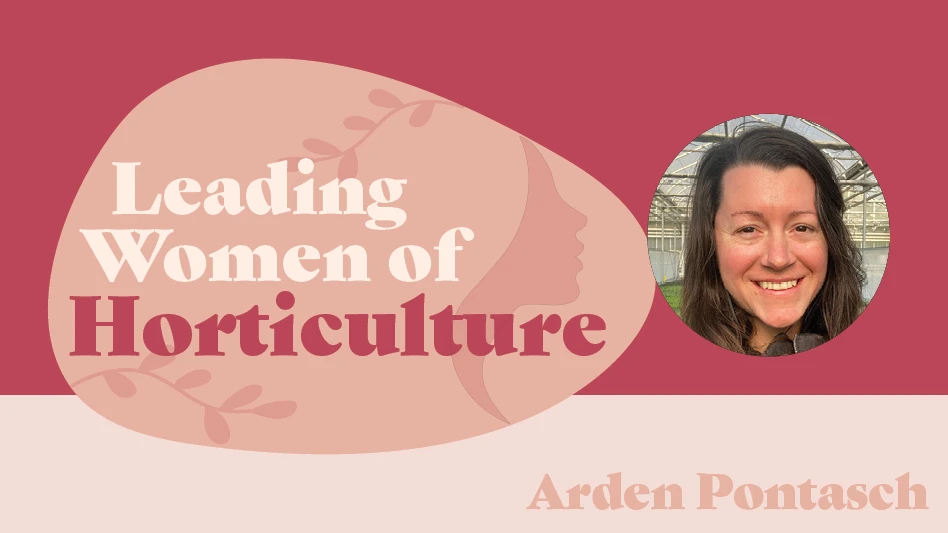The Trial Gardens at UGA were established in 1982 by Michael Dirr and Allan Armitage for the purpose of furthering student education and working with companies in the industry to promote plant breeding. At the Trial Gardens, companies from all over the world send us seeds, cuttings and plugs because they want to know how plants perform in hot, humid climates.
Athens, Ga., is located in Zone 7B, where our summers are miserably hot, our winters are mild and the average rainfall is more than 45 inches per year (when it rains). All plants are handled similarly in that we irrigate as needed, fertilize with Daniels Ornamental Landscape 10-4-4 approximately once a month and cut back, support and divide certain plants as needed. The gardens are mulched with pine straw and weeded as necessary, and ta da, we have beautiful growth. The only secret is the love and time put in by the garden’s staff and its incredibly wonderful leader, Dr. A, and that’s no secret.
The Classic City Awards are the highest honor we give plants in the garden. They must perform exceptionally well at their peak, and still look good at times when few or no flowers are present. The plants are voted on by Dr. Armitage and the staff. Find them, buy them, plant them. The following is Dr. A’s take on all the winners.
Sheridan Weaver, director of marketing and social media at The Trial Gardens at UGA; http://ugatrial.hort.uga.edu
For more: http://ugatrial.hort.uga.edu.
 Coreopsis ‘Solanna Golden Crown’ (Danziger)
Coreopsis ‘Solanna Golden Crown’ (Danziger)
The common tickseed (C. grandiflora) is hard to get excited about. Not that growers don’t appreciate the rapid growth and first year flowering, and not that gardeners and landscapers don’t appreciate the bright colors, but as a perennial, they usually disappoint by the end of the season, and are seldom “perennial.” We have looked at the Solanna series for a couple of years, and ‘Golden Crown’ has been impressive. Early to flower, bright, big double flowers, and reasonable foliage and toughness has earned its way on to this list. And for a common tickseed, that is a feat to be proud of. If it looks good next year (year three), I will shout its name to the heavens.
 Rosa First Impression (Greenheart Roses)
Rosa First Impression (Greenheart Roses)
I cannot tell you how impressed everyone is with this rose. We received it last year and knew nothing about it. The foliage was glossy green, absolutely bullet proof for disease and flowered and flowered and flowered. The vibrant yellow flowers simply caught the eye of all passers-by, and simply would not be ignored. Some people do not like the “quilling” of the flowers as they mature, but that’s like not liking an ice cream cone because it melts. Great plant.
 Rosa ‘SunRosa Red’ (Suntory)
Rosa ‘SunRosa Red’ (Suntory)
I was very pleased to see a rose program develop from one of the best flower breeders. Suntory unveiled two colors in this dwarf rose series, yellow and red, at the California Spring Trials in April. I was taken with their retail friendly size and wanted to evaluate leaf health and flower power in the very challenging heat and humidity of Athens, Ga. ‘SunRosa Red’ was glorious, and even though considerably smaller than all other roses we were grading, the plants more than held their own. Healthy foliage, flowers all season, and a short stature (~12-15 inches tall), a winner.
 Helleborus ‘Pink Frost’ (Heuger Trading Co.)
Helleborus ‘Pink Frost’ (Heuger Trading Co.)
 Lavandula ‘Silver Anouk’ (Darwin Plants)
Lavandula ‘Silver Anouk’ (Darwin Plants)
Lavenders seem to fit in everywhere, as herbal favorites to outstanding companion plants in the landscape, to perfumes and oils. We have trialed many fine lavenders at UGA, looking for one that will flower well, but more importantly maintain its habit and clean foliage throughout the season. In hot, humid climes, that is not an easy find. ‘Silver Anouk’ does all those things brilliantly and provides the added bonus of silvery foliage, a characteristic that sets it apart on the retail shelf and the garden bed.
 Sedum ‘Lemon Ball’
Sedum ‘Lemon Ball’
What a wonderful surprise this turned out to be. As a potted plant in the spring, these absolutely flew off our shelves during our plant sales. The chartreuse foliage and the vigorous habit simply attracted eyes and wallets – all plants were gone in an hour. In the garden, they simply grew bigger and produced a round shimmering ball of leaves that became a 55-mph plant. Flowers formed but are definitely secondary. I am not sure of the breeder; we obtained plants from James Greenhouse, in Bogart, Ga., and they are part of the Treadwell Program from Perennial Farm.
 Hibiscus ‘Royal Gems’ (Fleming’s Flower Fields)
Hibiscus ‘Royal Gems’ (Fleming’s Flower Fields)
The perennial hibiscus are slowly going through a transition, from large-flowered large plants to large-flowered compact forms. Big flowers are selling points, but while many of the hibiscus we have trialed are stunning to be sure, they simply are too big to ensure repeat sales. I believe there is a tsunami of more compact material in breeder pipelines, but right now, ‘Royal Gems’ is quite exceptional. The dark green foliage enhances the beautiful rose-pink blooms, and while the flowers are indeed large, they appear even bigger because of the compact size of the plant. People stopped, and asked about it, and admired. Without doubt, all perennial hibiscus have problems, still a little too large and insect problems, but heck, what would breeders do without problems to solve? ‘Royal Gems’ will soften the criticism of this fine plant; give it a try.
 Dianthus ‘Garden Spice Fuchsia’ (Fides)
Dianthus ‘Garden Spice Fuchsia’ (Fides)
Over the years, we have trialed more than 50 different dianthus, all touted as being better than the one before. Some were, most were not. The Garden Spice series has always been one of our highest rated groups of plants, year in and year out. The silver gray foliage and the handsome double flowers in many colors should be the number one choice for growers, retailers and landscapers if considering dianthus in their plant palettes. “Garden Spice Pink’ has earned this award before, ‘Garden Spice Fuchsia’ is just as good.
 Echinacea Sombrero Hot Coral and Solero (Darwin Plants)
Echinacea Sombrero Hot Coral and Solero (Darwin Plants) A lot of press has already been exhausted extolling the virtues of these plants. I have been one of the extollers and do so again – with pleasure. So many echinaceas are now so much better than even five years ago, that it is increasingly difficult to find any that stand out. These two do. Their compact habit, their ability to initiate vibrant flowers for a long period of time, and even reasonable healthy foliage for much of the season puts them on this list.
 Heuchera ‘Georgia Peach’ (Terra Nova Nurseries)
Heuchera ‘Georgia Peach’ (Terra Nova Nurseries)
Having trialed way too many coral bells in the last 10 years, we were a wee bit leery of another onslaught we knew was just around the corner. However, we have been in love with ‘Caramel’ and a few others for a number of years, and ‘Georgia Peach’ came along. We have evaluated it for nearly three years and it has risen to the top of the heuchera basket. Everyone comments on it in the spring, it is reasonably handsome in the summer, and if temperatures don’t get too cold and there is not a foot of snow, it can look very good in winter. Regardless, in the pot, it is a shopper-stopper.
 Gaura ‘Belleza Dark Pink’ (Darwin Plants)
Gaura ‘Belleza Dark Pink’ (Darwin Plants)
Gauras are always a tough sale – plants often grow too leggy, don’t flower when needed, and get lost in the landscape. There are some fine guaras, however, nothing eye-popping has come forward lately. We kept noting how the plant kept flowering all season, with a gentle haircut to help it along. Plants are not dwarf to be sure, but nor are they out of control. Flower color is rich and foliage is healthy. If a new gaura is on your list, take a close look at this one.

Explore the January 2013 Issue
Check out more from this issue and find your next story to read.
Latest from Nursery Management
- The Growth Industry Episode 3: Across the Pond with Neville Stein
- Trends: Proven Winners 2025 perennial survey shows strong demand
- Online registration opens for the 2025 Farwest Show
- Sustainabloom launches Wholesale Nickel Program to support floriculture sustainability
- Plant breeding as an art
- Society of American Florists accepting entries for 2025 Marketer of the Year Contest
- American Horticultural Society welcomes five new board members
- Get to know Christopher Brown Jr. of Lancaster Farms






